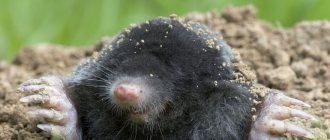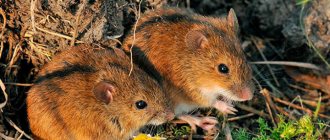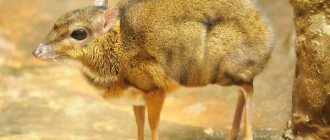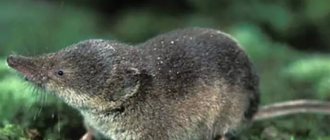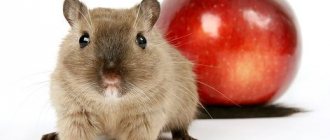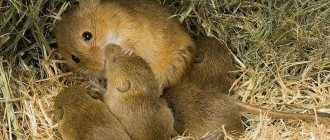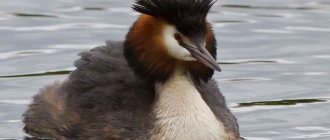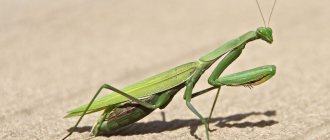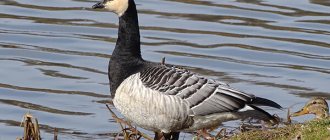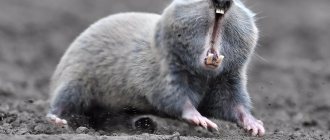The marten is a small predatory animal from the mustelidae family. The first ancient relative of the marten appeared about 35 million years ago. Currently, the genus of martens is represented by eight modern species and one extinct one.
Martens have an excellent sense of balance, the ability to quickly climb trees and make jumps up to 3-4 meters long. Their feet can turn 180 degrees, and their sharp claws and fangs cause dangerous lacerations. Such characteristics of the animal allow it to be an excellent hunter and successfully attack prey whose size exceeds its own.
In general, representatives of the marten genus are not endangered, but in some regions, due to intensive hunting and shrinking natural habitats, the populations of these animals are catastrophically declining. This became the reason for the inclusion of subspecies of the predator in the regional Red Books.
Characteristics and description
Most species of martens are active at night. Only the harza leads a diurnal lifestyle. Each adult has its own area, with the males' areas occupying a larger area. In winter, when there is much less prey, martens are forced to expand their territory for daily crawling.
After a hunt, a predatory animal usually rests in hollows or crevices of trees, squirrel holes or bird nests located high above the ground. Martens live in one territory throughout their lives, but do not have one permanent shelter. They choose several suitable places in which they periodically stay for daytime rest.
Animals do not hibernate. Before the onset of cold weather, they stock up in hollows and wait out the bad weather without leaving their shelter.
By the nature of their behavior, martens are loners. They can unite in pairs only for a short time during the rutting period. The exception is the harza, which can form groups of several individuals to hunt together, which allows it to cope with fairly large prey.
What does it look like
The appearance of martens has the following features:
- the body is elongated, flexible, the back is slightly curved;
- the head is small, with an elongated muzzle, the neck is long and very mobile;
- the ears are small, rounded, located on the sides;
- paws are thick, short, with five separate toes;
- the tail is long and fluffy.
The color of the predator depends on the variety. The predominant tones in the colors of martens are various variants of brown.
The sizes of some types are shown below.
| Variety name | Body length, cm | Weight, kg |
| Kharza | 70 | 5,8 |
| Ilka | 75 | 5 |
| Belodushka | 55 | 2,3 |
| Japanese sable | 54 | 1,6 |
| American marten | 45 | 1,3 |
Sable and marten: differences
Japanese sable
Animals are representatives of the same genus and have a certain external similarity. You can distinguish a sable from a marten by some characteristic features:
- sable has shorter mustaches;
- his ears are smaller, with pointed ends and moved back;
- The marten has a bushier tail;
- The sable's body is more compact and heavier.
The animals also differ in their habits: the sable lives on the ground and makes its nests between the roots of trees and in hollow trunks of dead wood, while the natural habitats of the marten are branches located in the upper tier, squirrel or bird nests.
The shiny and evenly colored sable fur is valued much more expensive than the fur of the coarse-haired marten.
When does a predator prefer to hunt?
Most often, the marten attacks its victims in the evening or night hours. This feature is so characteristic of the described animal that in places where it lives together with the sable, hunters can easily distinguish between their tracks. They believe that only the marten could make night movements. Moreover, the tracks left during the day belong to the sable. However, there are exceptions. Thus, female martens often go out hunting during the day during periods when they are feeding their young. With the onset of winter, if food is plentiful, the predator can rarely be seen outside its cozy shelter. In snowstorms and winter frosts, the marten prefers to sit out in a cozy nest for several days.
The hunting behavior of the predator is very similar to that of the sable. Depending on the amount of food in its habitat, the animal can travel from one to twenty kilometers in a day. The marten lays out especially long hunting routes in crooked forests located in the northern regions of the forest zone. The daily path of a predator is a multiple alternation of loops that lead from one zone of probable food occurrence to another. After the predator is completely satiated, it lies down to rest not far from the place of its feast. In this case, the animal can hide under a log or dead wood, and also climb into the nearest hollow of a bird or squirrel.
Species of representatives of the mustelidae family
Nilgiri Kharza
Let us consider in more detail the types of martens, their external signs and habits.
- Pine marten . It lives throughout Europe and in the European part of Russia. A distinctive feature of the animal is a bright yellow spot in the form of a triangle located under the neck. This predator is more adapted to life in trees than any other subspecies.
- Kharza . Also known as the yellow-breasted or Ussuri marten. The largest species, which is easily recognized by the bright yellow color of the front part of the body. Harza is widespread in southeast Asia, as well as on the islands of Java, Sumatra and Kalimantan. A separate population of the predator lives in the Primorsky and Khabarovsk Territories.
- Nilgiri kharza . A little studied species, small populations of which are found in the south of Hindustan. The animal has a dark brown body color with a bright yellow spot on the neck and chest.
- Stone marten ( Martes foina ). The animal is distributed in temperate latitudes of Europe and Asia. Due to the white forked spot located on the chest, the animal is also called the white-breasted marten or white-breasted marten. The predator is found mainly in forested foothills and can live at altitudes of up to 4000 m above sea level.
- Ilka . Also known as pecan or fisher marten. The animal lives in tall coniferous forests of North America. In winter, ilks do not climb trees, but dig holes directly in the snow. Contrary to their name, pecans practically do not feed on fish. Their favorite foods are arboreal porcupines, rodents, birds and young hares.
- Sable . Despite the ability to move deftly through trees, it prefers to hunt and seek shelter on the ground. Distributed in the taiga. A few limited ranges are found in northern, central and eastern Asia. Until 17 AD, sable was common in northern Europe, but due to the high value of its fur, the animal was completely exterminated there.
- American marten . Distributed in the temperate climate zone of North America. The animal is medium in size, color varies from light yellow on the chest and neck to reddish brown on the back and sides.
- Japanese sable . The historical habitat of the animal was the southern islands of Japan. Later, the species was introduced to the northern islands for further extraction of the animal's valuable fur. Japanese sable has lighter fur, the color of which can vary from light yellow to yellow-brown
What does it eat?
The marten is an omnivore. The main part of the diet consists of rodents, reptiles, insects, and small birds. The animal can also destroy bird nests located on tree branches and on the ground. If there is a body of water near the hunting grounds, snails, frogs, and fish fry are eaten.
During periods when there is very little animal food, the predator switches to a plant-based diet, eating nuts, wild berries, seeds, and the fruits of wild apple and pear trees.
The marten is the worst enemy of squirrels: it is capable of chasing a rodent that comes into view for a long time, overtaking it in a tree or in a hollow. Often, after a successful hunt, martens use squirrel nests as temporary resting places.
The predator can eat carrion, although it does so reluctantly and when absolutely necessary.
Hunting places
The marten very rarely comes down from the trees to the ground. She prefers to hunt and live in the upper forest layer. However, despite this, her movements on the ground are just as fast and free. The animal is able to run very quickly from one tree trunk to another.
The marten is a very dexterous and incredibly nimble predator. She has a flexible, thin body and a small, flat skull. The animal easily penetrates into narrow crevices between tree trunks and into hollows.
Where does it live?
The marten's habitat covers the northern and central parts of North America, almost all of Europe and certain regions of Asia. The predator is also found on the islands of Kalimantan, Sumatra, and Java. Unlike other representatives of the mustelid family, the animal is not found in South America.
OPOSSUM
Where does he live?
Stone marten
The natural habitat of most species of martens is lowland and mountain forests with a large number of trees. You can meet the predator in pine or mixed forests. Animals prefer to settle in areas with a large number of tall trees and dead wood, small forest clearings, and dense undergrowth.
Some species live in mountainous areas covered with dense vegetation. Natural zones suitable for the life of a predator also include dry subtropical forests and forest-steppes.
Sweet treat
What does a marten eat? The animal loves honey very much. The predator visits the hollow in which wild bees live until it has completely eaten all the reserves. Near the tree where a wintering bee colony was discovered by a marten, you can see pieces of honeycombs and even the frozen striped workers themselves in the snow. Of course, not every marten finds honey. This is why he is nothing more than a random catch.
If in the summer the pine marten destroys nests built by earth bees or wasps, then as a special delicacy it eats insect larvae with great greed.
How do martens reproduce in nature?
Sexual maturity in males and females occurs at 2 years. The animals' rut occurs in mid-late summer. A distinctive feature of marten reproduction is the delayed development of the embryo.
The total duration of pregnancy depends on the species. For example, American martens bear offspring for a little more than 7 months, and pecans for almost a year.
At one time, a female can bring from 1 to 8 cubs. Newborn babies have no fur, they cannot see or hear and are completely dependent on their mother. During the first weeks, the female practically does not leave the brood, finding prey as close to the nest as possible. At one month, the cubs' eyes open, then teeth erupt, and the female begins to accustom them to solid food. For the first time, grown-up babies leave the nest at 3 months, and at 6 months they already try to hunt on their own. First, young martens search for prey in their mother's territory, and then look for free areas. During this period they are quite vulnerable to predators.
MUSKRAT
Natural enemies
The main enemies of the marten in nature are larger predators: foxes, wolves, lynxes, wolverines. In most cases, the nimble and fast animal manages to escape from its pursuers. Birds of prey pose a much greater danger to him: hawks, golden eagles and eagle owls.
The kharza, the largest and strongest of all martens, suffers least from attacks from predators.
WOLF
Interesting facts about martens
- The marten never settles in a birch forest. This is due to the absence in birch groves of cones, nuts, acorns and other food for squirrels - the main prey of martens. In addition, the red fur of the animal is too noticeable against the background of white birch trunks.
- The ability of martens to deftly climb trees and jump from branch to branch is ensured by semi-retractable claws. These animals are the only representatives of the mustelid family with such a claw structure.
- Marten fur is one of the elite furs. It is thick, light, warm, and has a fairly hard down that prevents rapid wear of the products. The high price of marten fur is also due to the fact that it has to be obtained only during animal hunting. The marten does not tolerate life in captivity and despite all the efforts of breeders, they have not been able to develop a variety suitable for breeding on fur farms.
- Before the onset of cold weather, the animal’s feet are covered with fur, which greatly facilitates movement on snow and ice.
- Hybrids may appear where the ranges of different marten subspecies intersect. The most studied is kidas. This hybrid of sable and pine marten is larger than its parents. According to existing information, the offspring of kidas are sterile.
- In the south-east of Australia there lives a tiger cat, whose second name is the spotted-tailed marsupial marten. The animal received its name due to a certain external resemblance to European and Asian martens, but there is no relationship between the species. Another similar Australian species of marsupial predator is the speckled marsupial marten, or quoll.
The basis of the diet
What does the marten eat in its habitat? The main food in its diet is voles. The predator eats them not only during the warm season. The animal also catches voles in winter. Moreover, in the winter diet of the predator, their number decreases only by insignificant percentages. This indicates the fact that even a meter thick snow cover is not a serious obstacle for the marten when pursuing its victims. In those years when there are especially many voles, the forest predator is the most well-fed. At the same time, its daily range is reduced to a minimum.
